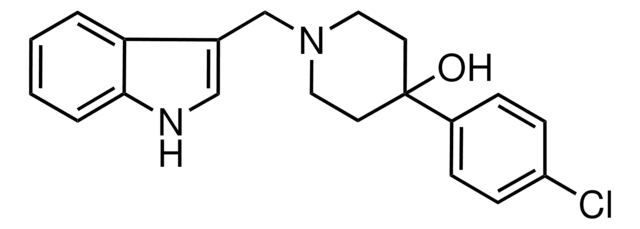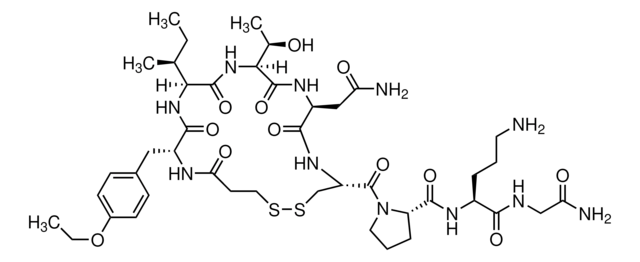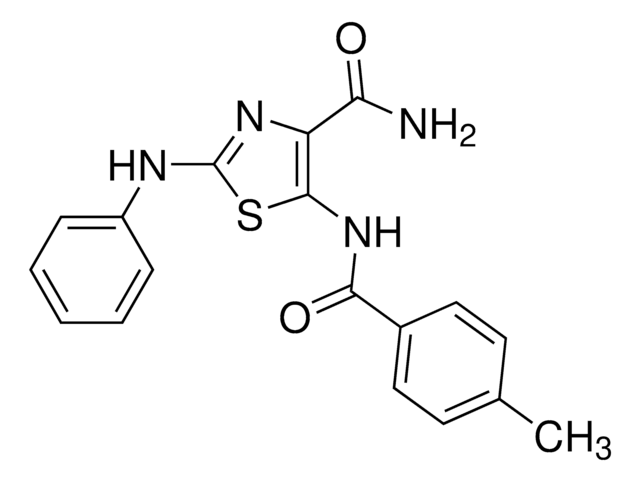Kluczowe dokumenty
SML2223
WAY-267464 dihydrochloride
≥98% (HPLC)
Synonim(y):
4-(3,5-Dihydroxy-benzyl)-piperazine-1-carboxylic acid 2-methyl-4-(3-methyl-4,10-dihydro-3H-2,3,4,9-tetraaza-benzo[f]azulene-9-carbonyl)-benzylamide dihydrochloride, N-[[4-[(4,10-Dihydro-1-methylpyrazolo[3,4-b][1,5]benzodiazepin-5(1H)-yl)carbonyl]-2-methylphenyl]methyl]-4-[(3,5-dihydroxyphenyl)methyl]-1-piperazinecarboxamide dihydrochloride, WAY 267,464 dihydrochloride, WAY 267464 dihydrochloride, WAY-267,464 dihydrochloride, WAY267464 dihydrochloride
Wybierz wielkość
817,00 zł
Wybierz wielkość
About This Item
817,00 zł
Polecane produkty
Próba
≥98% (HPLC)
Formularz
powder
warunki przechowywania
desiccated
kolor
white to beige
rozpuszczalność
H2O: 2 mg/mL, clear
temp. przechowywania
2-8°C
ciąg SMILES
O=C(NCC1=CC=C(C=C1C)C(N2CC3=C(NC4=CC=CC=C24)N(N=C3)C)=O)N5CCN(CC5)CC6=CC(O)=CC(O)=C6
InChI
1S/C32H35N7O4.2ClH/c1-21-13-23(31(42)39-20-25-18-34-36(2)30(25)35-28-5-3-4-6-29(28)39)7-8-24(21)17-33-32(43)38-11-9-37(10-12-38)19-22-14-26(40)16-27(41)15-22;;/h3-8,13-16,18,35,40-41H,9-12,17,19-20H2,1-2H3,(H,33,43);2*1H
Klucz InChI
OTFWXMFLPMUDFP-UHFFFAOYSA-N
Działania biochem./fizjol.
Kod klasy składowania
11 - Combustible Solids
Klasa zagrożenia wodnego (WGK)
WGK 3
Temperatura zapłonu (°F)
Not applicable
Temperatura zapłonu (°C)
Not applicable
Wybierz jedną z najnowszych wersji:
Certyfikaty analizy (CoA)
Nie widzisz odpowiedniej wersji?
Jeśli potrzebujesz konkretnej wersji, możesz wyszukać konkretny certyfikat według numeru partii lub serii.
Masz już ten produkt?
Dokumenty związane z niedawno zakupionymi produktami zostały zamieszczone w Bibliotece dokumentów.
Active Filters
Nasz zespół naukowców ma doświadczenie we wszystkich obszarach badań, w tym w naukach przyrodniczych, materiałoznawstwie, syntezie chemicznej, chromatografii, analityce i wielu innych dziedzinach.
Skontaktuj się z zespołem ds. pomocy technicznej




